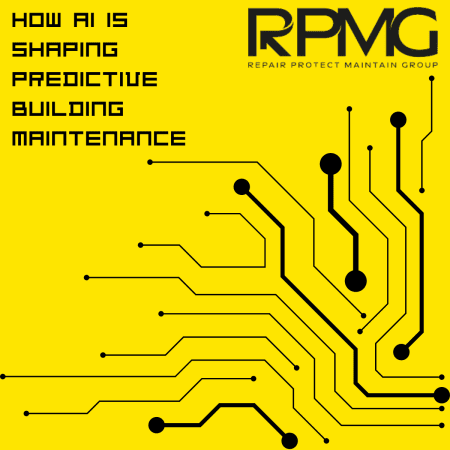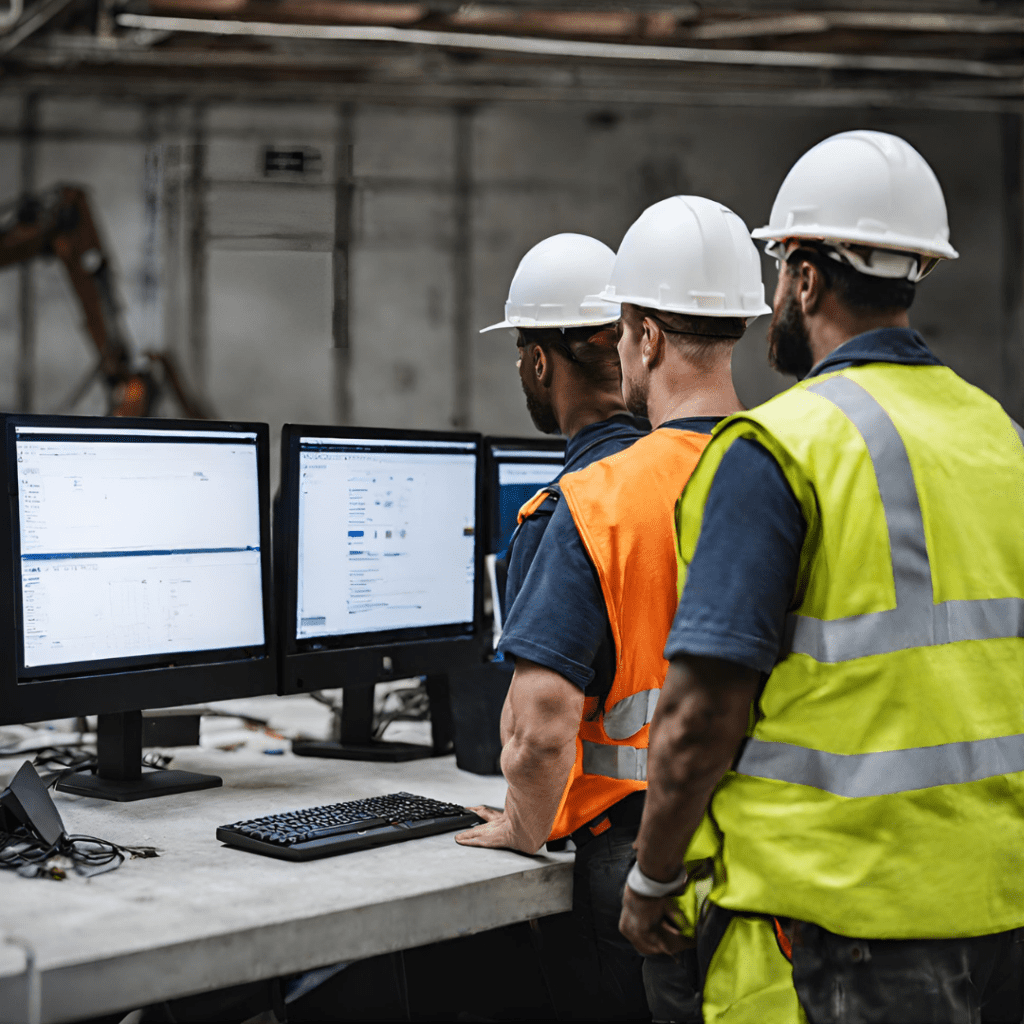The future of predictive maintenance: The AI Revolution
In an era dominated by technological advancements, the integration of artificial intelligence (AI) has become a game-changer in various industries. The realm of building fabrics maintenance is no exception.
Predictive maintenance, empowered by AI, has emerged as a transformative approach, allowing facility managers to proactively address issues before they escalate. This article explores the practical aspects of leveraging AI for predictive maintenance in building fabrics, providing a roadmap for seamless integration and enhanced efficiency.

Understanding Predictive Maintenance:
Predictive maintenance involves the use of data, algorithms, and machine learning to forecast equipment failures before they occur. When applied to building fabrics, this strategy shifts maintenance practices from reactive to proactive, minimising downtime and extending the lifespan of materials.

Key Components of AI-Powered Predictive Maintenance:
Data Collection and Integration:
AI relies on robust datasets for accurate predictions. Implement sensors, IoT devices, and other monitoring tools to collect real-time data on fabric conditions, environmental factors, and usage patterns. Centralise this data for streamlined analysis.
Machine Learning Algorithms:
Train machine learning models to recognise patterns indicative of fabric degradation or potential issues. These algorithms can learn from historical data, continuously improving their predictive accuracy over time.
Predictive Analytics:
Utilise predictive analytics tools to interpret AI-generated insights. These tools can identify potential fabric vulnerabilities, estimate remaining useful life, and recommend optimal maintenance schedules.
Steps to Implement AI-Powered Predictive Maintenance:
Assess Current Infrastructure:
Evaluate existing monitoring systems and data collection processes. Identify areas where AI integration can enhance data accuracy and predictive capabilities.
Choose the Right AI Tools:
Select AI platforms and tools that align with your specific maintenance needs. Consider factors such as scalability, ease of integration, and compatibility with existing systems.
Establish Data Security Measures:
Given the sensitivity of building fabric data, prioritise robust cybersecurity measures. Implement encryption, access controls, and regular security audits to safeguard information.
Integration with Maintenance Workflows:
Integrate AI insights seamlessly into your maintenance workflows. Ensure that predictions are communicated effectively to maintenance teams, enabling timely and targeted interventions.
Continuous Monitoring and Improvement:
AI is dynamic and benefits from continuous learning. Regularly update and refine your AI models based on new data and evolving maintenance requirements.

Benefits of AI-Powered Predictive Maintenance:
Cost Savings: Identify and address issues before they escalate, minimising repair costs and avoiding costly downtime.
Extended Lifespan: Proactive interventions based on AI predictions can significantly extend the lifespan of building fabrics.
Efficiency Gains: Streamlined maintenance processes and targeted interventions lead to more efficient use of resources.
Data-Driven Decision-Making: AI-generated insights empower facility managers with data-driven decision-making capabilities, enhancing overall operational efficiency.
In Conclusion…
The integration of AI for predictive maintenance in building fabrics is a transformative leap towards more efficient, sustainable, and cost-effective facility management. By embracing this technological evolution, facilities can not only prolong the life of their building fabrics but also create a smarter and more resilient infrastructure for the future. As AI continues to advance, the potential for predictive maintenance in the building fabrics industry is limitless, promising a future where issues are addressed before they become problems, and buildings stand as testaments to the power of intelligent maintenance strategies.


